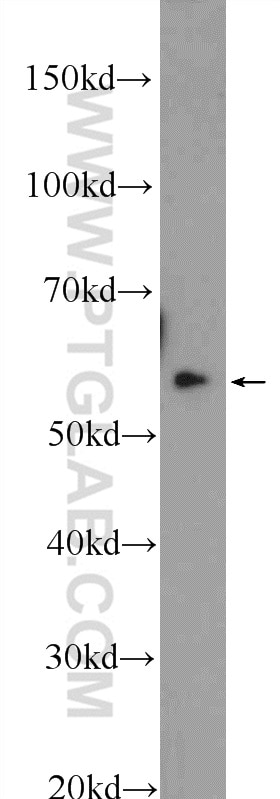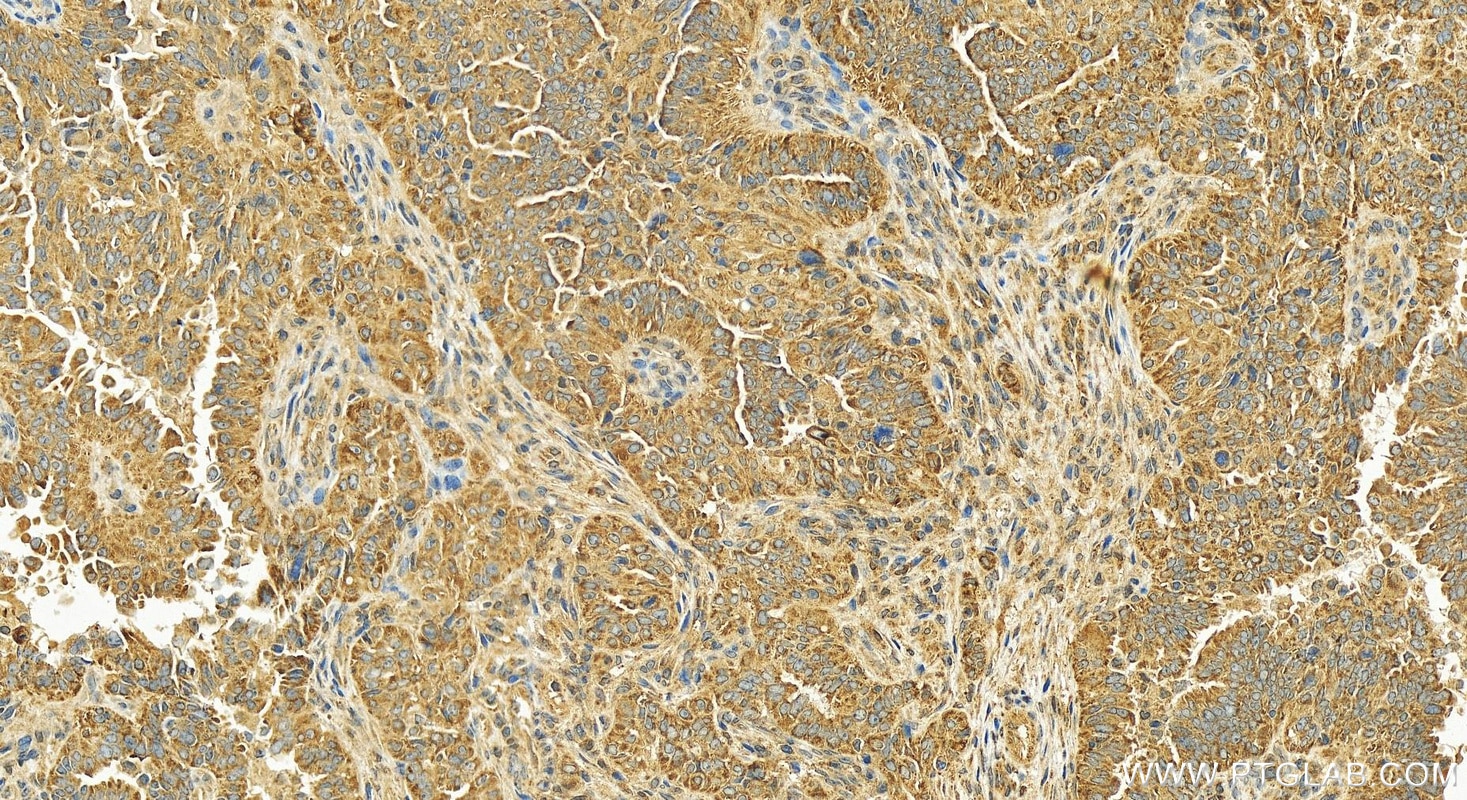Tested Applications
| Positive WB detected in | A431 cells, HepG2 cells |
| Positive IHC detected in | human stomach cancer tissue, human ovary cancer tissue Note: suggested antigen retrieval with TE buffer pH 9.0; (*) Alternatively, antigen retrieval may be performed with citrate buffer pH 6.0 |
| Positive IF/ICC detected in | HepG2 cells |
Recommended dilution
| Application | Dilution |
|---|---|
| Western Blot (WB) | WB : 1:500-1:2000 |
| Immunohistochemistry (IHC) | IHC : 1:50-1:500 |
| Immunofluorescence (IF)/ICC | IF/ICC : 1:200-1:800 |
| It is recommended that this reagent should be titrated in each testing system to obtain optimal results. | |
| Sample-dependent, Check data in validation data gallery. | |
Product Information
10177-2-AP targets TBRG4 in WB, IHC, IF/ICC, ELISA applications and shows reactivity with human samples.
| Tested Reactivity | human |
| Host / Isotype | Rabbit / IgG |
| Class | Polyclonal |
| Type | Antibody |
| Immunogen |
CatNo: Ag0212 Product name: Recombinant human TBRG4 protein Source: e coli.-derived, PGEX-4T Tag: GST Domain: 40-248 aa of BC002732 Sequence: MRKLKYKHLAFLAESCATLSQEQHSQELLAELLTHLERRWTEIEDSHTLVTVMMKVGHLSEPLMNRLEDKCLELVEHFGPNELRKVLVMLAAQSRRSVPLLRAISYHLVQKPFSLTKDVLLDVAYAYGKLSFHQTQVSQRLATDLLSLMPSLTSGEVAHCAKSFALLKWLSLPLFEAFAQHVLNRAQDITLPHLCSVLLAFARLNFHPD Predict reactive species |
| Full Name | transforming growth factor beta regulator 4 |
| Calculated Molecular Weight | 71 kDa |
| Observed Molecular Weight | 58 kDa |
| GenBank Accession Number | BC002732 |
| Gene Symbol | TBRG4 |
| Gene ID (NCBI) | 9238 |
| RRID | AB_2255699 |
| Conjugate | Unconjugated |
| Form | Liquid |
| Purification Method | Antigen affinity purification |
| UNIPROT ID | Q969Z0 |
| Storage Buffer | PBS with 0.02% sodium azide and 50% glycerol, pH 7.3. |
| Storage Conditions | Store at -20°C. Stable for one year after shipment. Aliquoting is unnecessary for -20oC storage. 20ul sizes contain 0.1% BSA. |
Protocols
| Product Specific Protocols | |
|---|---|
| IF protocol for TBRG4 antibody 10177-2-AP | Download protocol |
| IHC protocol for TBRG4 antibody 10177-2-AP | Download protocol |
| WB protocol for TBRG4 antibody 10177-2-AP | Download protocol |
| Standard Protocols | |
|---|---|
| Click here to view our Standard Protocols |














